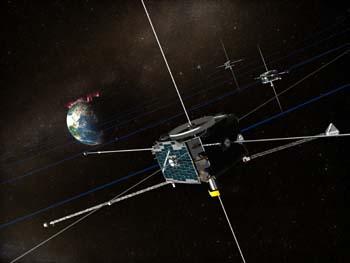Lancaster scientist joins NASA mission to understand space storms

A Lancaster scientist is to play a key role in a NASA mission which sees five satellites launched this month from Cape Canaveral in Florida.
The satellites will orbit the Earth and help scientists study the mysteries of the Northern Lights or aurora borealis, the spectacularly colourful glow in the sky at the North Pole as energy from the sun hits the Earth’s magnetic field.
THEMIS is specifically designed to investigate substorms, atmospheric events visible in the northern hemisphere as a sudden brightening of the northern lights. The two year mission will also provide clues about the role of substorms in severe space weather and identify where and when substorms begin.
As well as instruments on board the satellites, a worldwide network of remote-controlled cameras will photograph the Northern Lights from the Earth.
Dr Jim Wild from the Department of Communication Systems at InfoLab21 will be responsible for the cameras in Iceland and the Faroe Islands.
He said: “There will be a huge array of special auroral cameras on the ground all across Canada and Alaska and I’ll be responsible for deploying identical cameras in Iceland and the Faroe Islands. This will help the north American chain link up with the existing cameras in Scandinavia.”
Dr Wild is working with the NASA team and the University of Calgary in Canada, which has made the cameras specially for sub-zero temperatures.
“I’ll be operating the cameras remotely and it’ll be my job to get them connected to the internet.”
Frank Snow, THEMIS Project Manager at the Goddard Space Flight Centre in the US said: “There are few more awe inspiring sights than the colourful and dynamic beauty of the Northern Lights. THEMIS is a challenging project employing 5 satellites, 25 scientific instruments and 20 ground observatories that will replace old myths with scientific explanations for a spectacular light display.”
Dr Wild’s next task is to carry out research based on data from the NASA mission from both the cameras and experiments on the spacecraft in order to try to understand what triggers magnetospheric substorms.
“The cameras should produce spectacular images of the aurora borealis but there will be thousands of DVDs filled with millions of these images so the next stage is to develop the intelligent software to analyse them.”